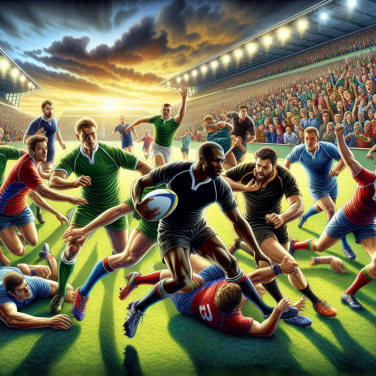Unpacking the Physical Demands: How Far do Soccer Players Run in a Match?
Behind the scenes of every thrilling soccer match, there are countless hours of training, strategizing, and preparation. A significant part of these unseen aspects of the game are the physical demands placed on the players, particularly the distances they cover on the pitch during an average match. While soccer as a sport demands a diverse set of physical skills including agility, strength, and endurance, it's the ability to continually run throughout a match that stands out.
Data collection tools and tracking systems for professional sports have improved over the years, and this development means that we now have specific figures to understand the effort needed by soccer players. On average, a professional outfield player runs between 10 to 13 kilometers per game. Still, this can increase or decrease based on a variety of factors such as the player's position, the team's playing style, and the specific demands of individual matches.
Midfielders, for example, usually cover the most ground on a soccer pitch due to the nature of their role. As they are responsible for connecting the defensive and attacking thirds, midfielders often have to shuttle between these areas throughout the game, frequently running up to 12 to 13 kilometers in a match. Wingers and attacking midfielders are also subject to extensive running, clocking in an average of 10 to 11 kilometers per game due to constant sprints into attacking positions and tracking back to defend.
Defenders, despite appearing to have static positions, also cover a lot of ground over the course of a game. Fullbacks, for instance, who operate on the wide areas of a team’s defense, often make frequent runs forward to support in attack, which can lead them to run up to around 10 kilometers, while central defenders may run between 9.5 and 10 kilometers.
The role and playing style of a team heavily influence the distance covered by the players. Teams that adopt a pressing style such as Liverpool or Borussia Dortmund demand their players to cover more ground as they force their opponents into losing possession. Moreover, games with extra time or those of tournaments can see players running even more to secure victory.
Also, not to forget, this running isn’t just a steady jog. It involves various speeds and intensities, from walking and jogging to sprinting, affecting a player’s stamina and energy levels differently. Research shows that players make about 150-200 short, intense sprints during a game, each sprint lasts for about 2 to 4 seconds.
Read also:
Scoring Goals on Wheels: The Thrill of Powerchair Football
How Player Positions and Game Strategies Influence Running Distance in Soccer
In professional soccer, running is foundational to the game's dynamics and the players' performance. A pivotal yet largely unaddressed aspect in the public discourse pertains to how the distance run by players during a game is influenced by their positions and the overall game strategies.
Different positions call for unique running demands. For instance, central midfielders typically cover the most distance because their role involves both aiding in offense and falling back in defense. The continuous shifts between these two responsibilities require a lot of movement, thus contributing to the greater distance covered.
Wingers are also known for covering significant distances, primarily sprinting. Their specialized function of driving the ball up the field along the sidelines demands speed and constant movement. They run to create scoring opportunities, move in unexpected ways to destabilize opposing players, and run back to defend when necessary.
In contrast, players like center-backs and goalkeepers cover less distance. Their specialized roles do not demand the same level of running. Center-backs usually patrol a specific area, holding offense at bay, while goalkeepers predominantly stay within their penalty area, focusing on reacting quickly to defend the goal.
Game strategies further influence running distances. High-press strategies, for example, require every player, regardless of their position, to exert high energy to pressure the opposition into losing possession. This strategy necessitates more running and means players collectively cover more distance. On the other hand, a counter-attack strategy relies on swift attack following regained possession, implying that midfielders and forwards might cover greater distances while defenders lie low.
Furthermore, the opposition’s strategies can impact the running distance as well. In situations where the opposition retains possession for longer durations, defensive players and midfielders may have to cover more ground to dispossess and counter-attack.
In essence, the distance run by soccer players is not a random occurrence but a nuanced aspect of the game influenced significantly by player positions and strategies. A comprehensive understanding of this can offer valuable insights into a team's performance, stamina management and can better inform tactical decisions. Hence, behind every run, sprint or trot on the soccer field, lies a multitude of tactical implications, making soccer a game of not just skill but immense strategy.




